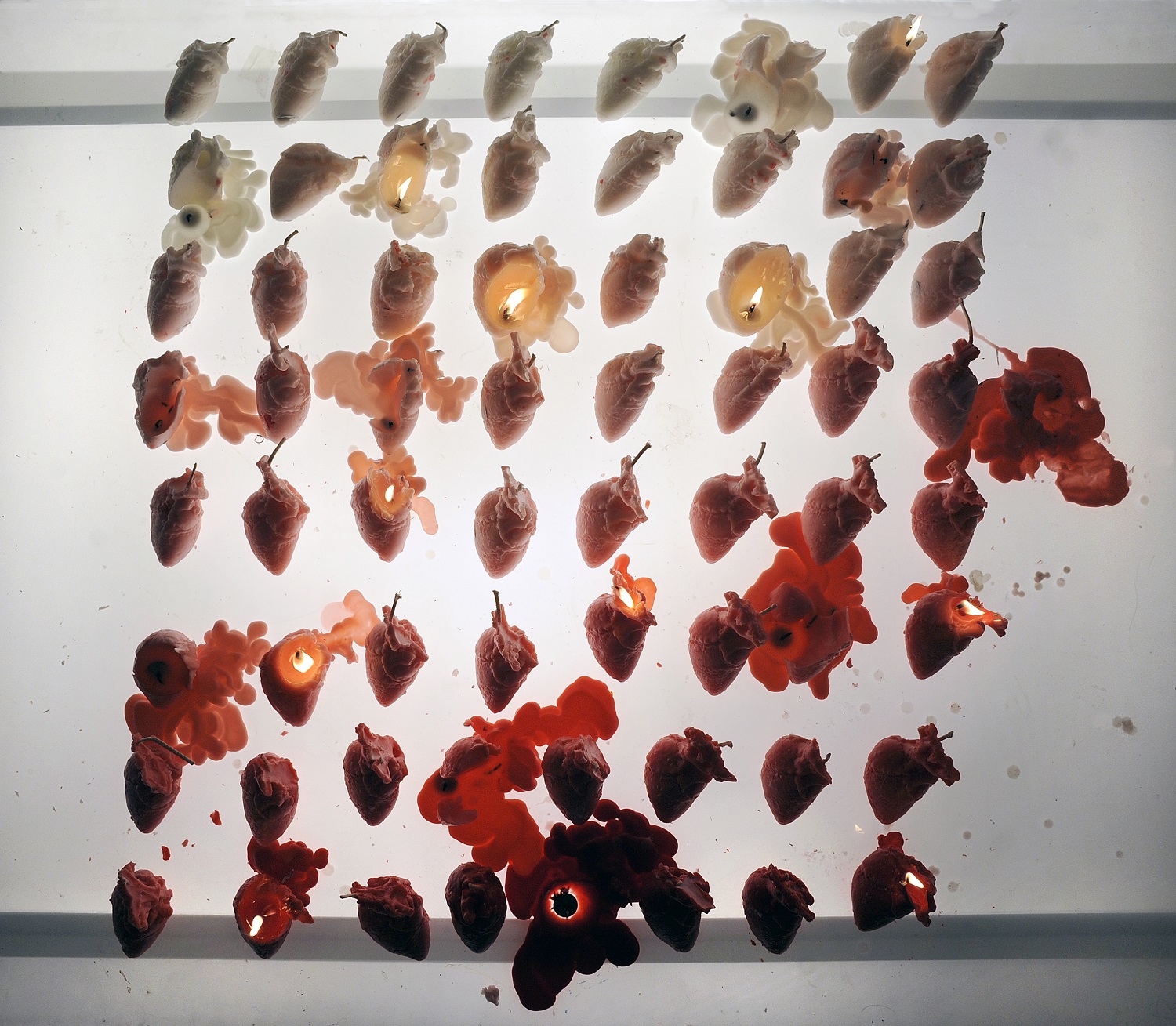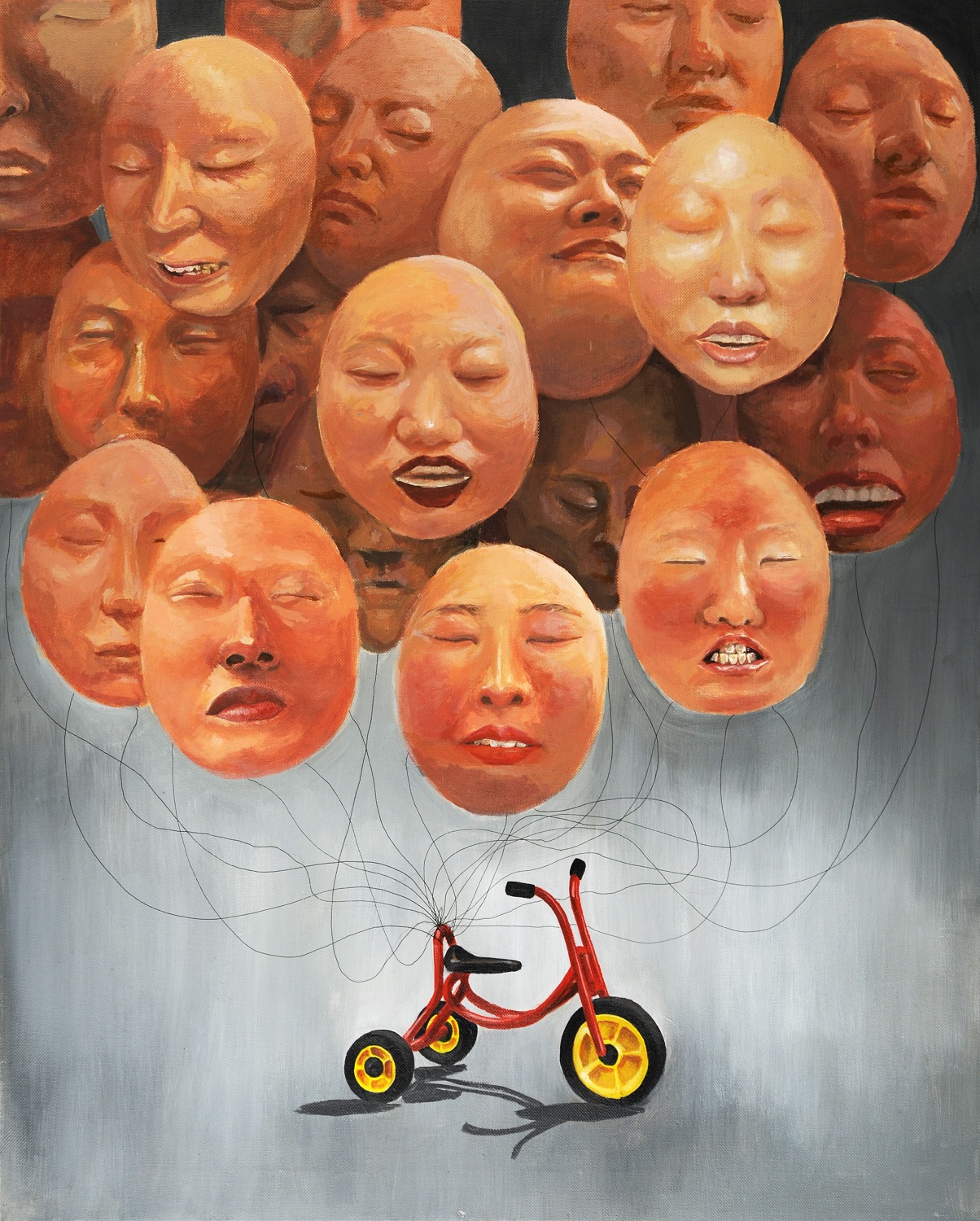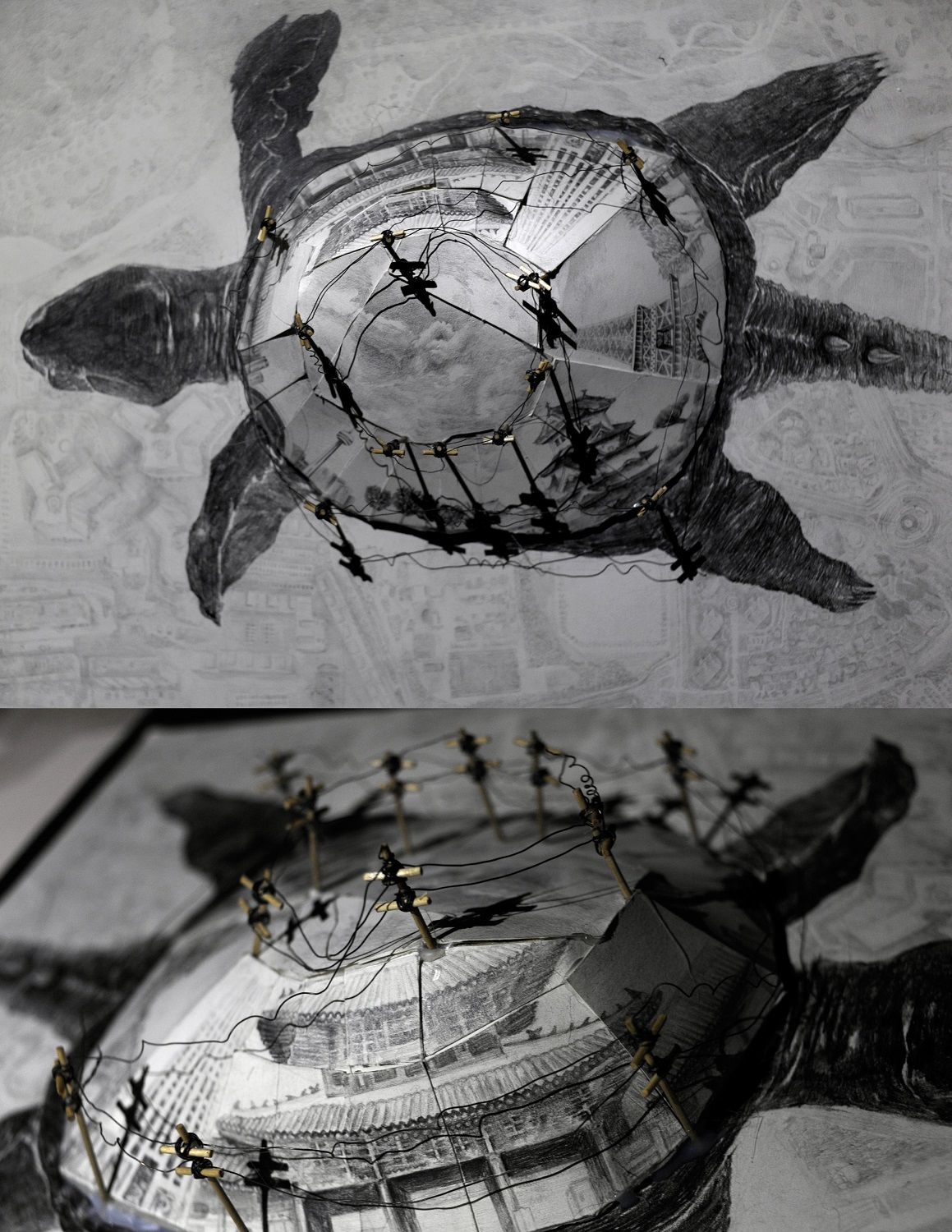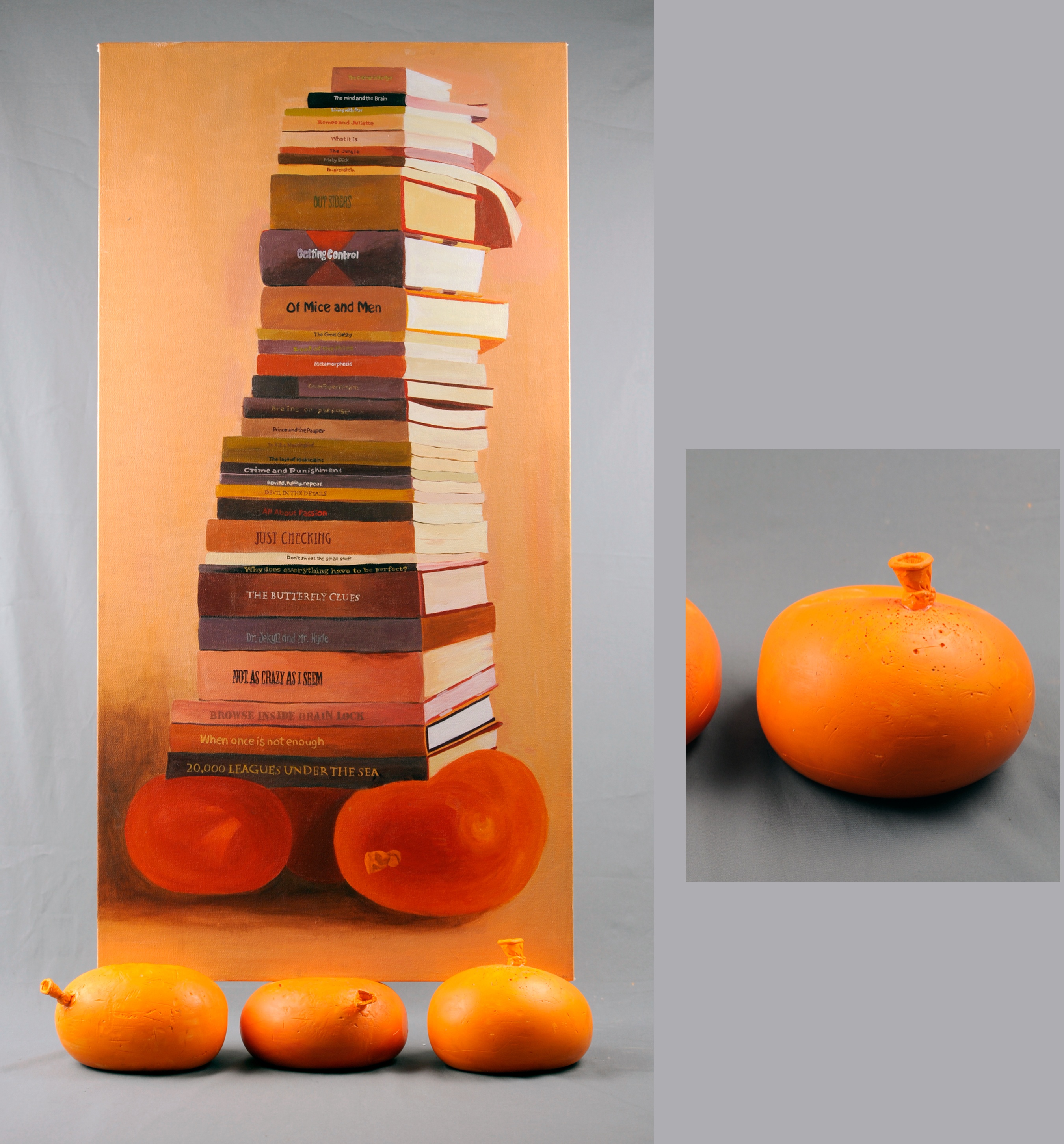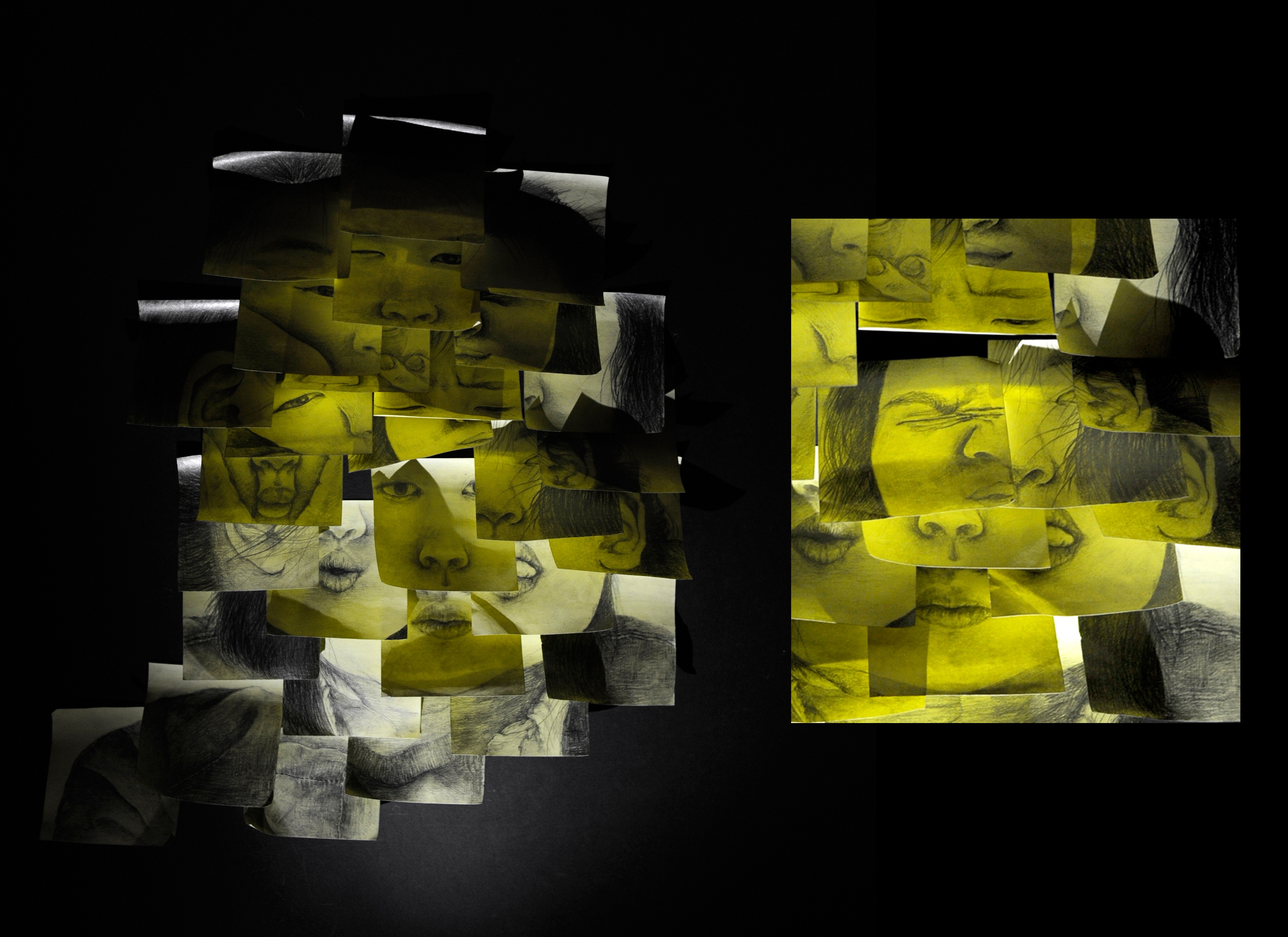The above images are from Min Jung Son’s Art Portfolio, which received a Gold Key from the Scholastic Art & Writing Awards.
This is a guest post from Hayley Palmatier, Director at Ashcan Studio of Art in NYC.
Ashcan Studio is a Visual Arts Portfolio Preparation school located in NYC. We admit local, national, and international students who have the goal of applying to any program where an Art Portfolio is required for admissions, such as an Arts High School or BFA program. Some students start at Ashcan as beginners with little or no access to art courses; others are advanced students with a lot of skill and imagination who would like to develop their strengths even more to win awards and get scholarships.
Ashcan Studio students have received thousands of Scholastic Art Awards since we opened in 2006. We judged in the Art Portfolio category each year from 2012–14, and in 2015 the Scholastic Art & Writing Awards invited us to become Region-at-Large (RAL) Partners by hosting the judging of Scholastic Art Award submissions in all categories. We have been RAL partners each year since.
Even though we’ve been helping students make great artwork to submit to Scholastic Art Awards for twelve years, judging and overseeing the judging panels was eye opening for us. We got to see firsthand what it was that made the judges pass by some Art Portfolios and choose others for Silver Key and Gold Key awards.
Looking through all of the Scholastic Art Awards applicants’ Art Portfolios, we noticed a few things that may be helpful for you when you choose work for the Art Portfolio Category.
Common Thread
We noticed each year that the students who received Scholastic Awards submitted eight works to the Art Portfolio Category that looked like they belonged together. Each piece enhanced the work around it, and there was a clear common thread throughout the portfolio. This is what Scholastic Art & Writing Awards mean by “the emergence of personal voice or vision,” one of their core values. Whether it’s obvious or subtle, in the best Art Portfolios all of the pieces have a common thread or theme. That thread or theme should be based on your personal interests and vision. Is it relationships, fashion, poetry, a current event, an object? The common thread can also be more visual than literal. A theme that streams through each artwork could be consistent colors, materials, repetition, or the self. The best portfolios and the portfolios that receive Scholastic Awards have both subject and visual threads.
Documentation
One of the most important and appealing things when looking at the submitted Art Portfolios was seeing work that was well documented, meaning the photos of the work were perfect, or near perfect. We noticed great work that was not photographed and edited well was quickly dismissed as not being good work. I can’t stress enough the importance of paying attention to the quality of your photographs. How you represent yourself and your work is very important. Have pictures of your work taken professionally, if you can. If you take them yourself, make sure your work is hung flat and straight on the wall and that there’s even lighting. Take photographs of your work straight on (centered both vertical and horizontal), and be careful not to angle the camera above, below, or from the side. Never use a flash—instead use two-point, even studio lighting or natural light from the outside. Take photographs of three-dimensional work in front of a neutral background (backdrop paper), or in some cases, on site. Crop and alter the image in Photoshop or a similar program. There should be no visible outlines, no shadows, and the images should be sharp and clear.
Choosing the Work to Submit
When you’re choosing the eight pieces you are going to use, it is very important to think about the Scholastic Art & Writing Awards’ judging criteria, which are originality, technical skill, and emergence of a personal vision or voice.
- Originality is work that breaks from convention, blurs the boundaries between genres and challenges notions of how a concept or emotion can be expressed.
- Technical skill does not necessarily mean that you can draw something exactly like it is in real life, though it can. Technical skill can also mean a perfect composition, or outstanding use of color.
- Emergence of a personal vision or voice requires you to be honest with yourself.
Do not add anything that doesn’t fit all three of these descriptions. Scholastic Awards judges are professional artists, and they know when an artwork is the result of an assignment that you did not particularly enjoy making. If you have four pieces you loved making, and then four that were assignments that you did because you had to, the judges will see this and think that the inconsistency means lack of dedication to art making. This means that you should put a lot of effort into making your school assignments really outstanding and about what you love, or leave those out when considering what work to choose. The best thing to do is to make extra work—work on your portfolio daily, and then you will have the best to choose from.
Curating your work, meaning the work you choose and its order and flow from one to the next, needs to be given a lot of thought. Open and end with a bang. In other words, bookend your portfolio with your two best works, your best piece first and your second best last. The work in the middle is the supporting story that keeps the judges interested and wanting to see your art portfolio through to the end.
Have Fun
Be brave, be genuine, and feel comfortable expressing your true interests and self. Feel willing to be vulnerable, because work that’s honest has the most impact. Also ease up on expectations. Expectations make you feel smaller then you are and weigh you down with worry. You can be romantic, funny, cute, dark, strange, stoic, distressed, heartbroken, or love stricken—they’re all good themes when you put your all into it. You can express anything you want through art. Focus on what you love, what makes you curious, and what’s exciting for you to make.
About Ashcan Studio
Ashcan Studio is a fun and diverse creative space, where you can work together with other students and great Instructors to find what you’re are best at, ultimately finding the right direction for your art. Visual Arts Portfolio Preparation and Art Contest Prep classes are each day, year round, Monday through Saturday from 11:00–3:00 and 4:00–8:00 for ages 11 and up. We have classes in Drawing, Painting, Sculpture, Graphic Design, Fashion Design, and others. Especially popular is our Summer Portfolio Prep Program and our Digital Art Program.
Please ask us anything! You can contact us at info@ashcanart.com or call 212-967-8101. Learn more at ashcanstudio.com and follow us at @ashcanstudio.
| MANHATTAN CAMPUS Art Studio NYC 45 East 34th Street, 4th floor New York, NY 10016 TEL: 1-212-967-8101 |
LITTLE NECK CAMPUS Art Studio Long Island 252-20 Northern Blvd, Suite 209 Little Neck, NY 11362 TEL: 1-718-819-0004 |
FLUSHING CAMPUS Art Studio Queens 36-26 Main Street, Suite 3X Flushing, NY 11354 TEL: 1-917-675-4195 |
Need inspiration? Visit the Scholastic Art & Writing Awards’ online galleries to see examples of Art Portfolios that received Gold Medals from the Scholastic Awards.

